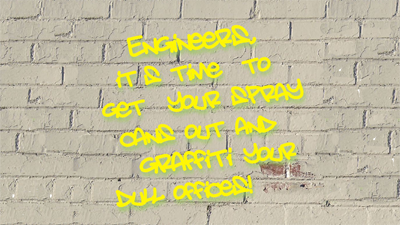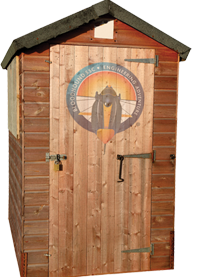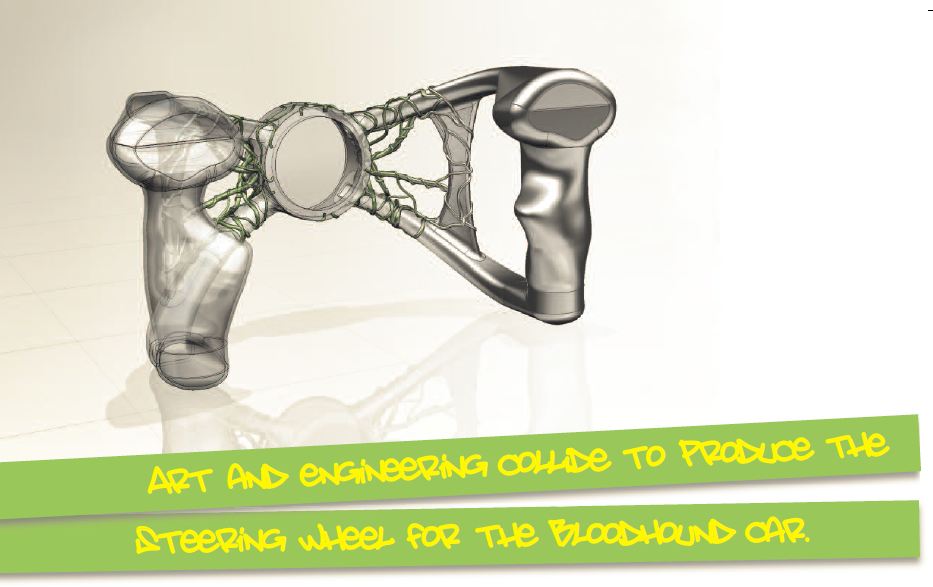
The community of AM, along with the growing interest from media journo’s, have banded around talk of AM as ‘the next industrial revolution’, ‘a technology revolution’, ‘a new technology age’. Spirited commentary I think you’ll agree, and for something that in terms of ‘revolutionary’ speak has been emerging and making a stir for the past 20years but hasn’t really done anything yet. It hasn’t hit industrial scale yet. It hasn’t changed our transport systems, hasn’t built bridges, hasn’t found new energy sources or changed our society. If anything it is in a pre-industrial revolution.
 The original industrial revolution took a century to establish itself, in fact there was a First and Second revolution over the 18th and 19th Century, so at that rate AM may have another 80 years to go then. OK, so AM is not a ‘revolution’, and it never will be, because the effect of AM will be blurred in the widespread advancement of technology, and since it is just a process, the machines themselves will become common and lose their current ‘celebrity status’. Just look at a lathe, or a mill. The Industrial revolution would not have been possible without the development of the ability to make stuff, but we don’t look back and single out the machine tools that shaped the innovations of that era, but rather we reflect on the things they made by the engineers that made them. At root, AM is just another process to make something, its’ the vision of what is possible with technology that defines the world around us. And here lies the problem. The vision of what’s possible using AM and where it goes is so mindbendingly infinite and could challenge everything we know about engineering and manufacturing, you have to be either a genius or completely insane to dream of the complexity of shape, form, function and application that AM points toward. Since most of us are limited by not being a genius, we have to look to the creative industries to show us the ‘art of the possible’. Artists don’t think like engineers. They have complete freedom of thought and are not bound by process. They just think, drink a glass of Chardonay, do something to expand their mind to get inspired, and then transform their vision into a picture, a sculpture, or a building that means something so deeply meaningful it is then accompanied by a plaque with an abstract that uses such highfaluting language, it takes another genius to understand it.
The original industrial revolution took a century to establish itself, in fact there was a First and Second revolution over the 18th and 19th Century, so at that rate AM may have another 80 years to go then. OK, so AM is not a ‘revolution’, and it never will be, because the effect of AM will be blurred in the widespread advancement of technology, and since it is just a process, the machines themselves will become common and lose their current ‘celebrity status’. Just look at a lathe, or a mill. The Industrial revolution would not have been possible without the development of the ability to make stuff, but we don’t look back and single out the machine tools that shaped the innovations of that era, but rather we reflect on the things they made by the engineers that made them. At root, AM is just another process to make something, its’ the vision of what is possible with technology that defines the world around us. And here lies the problem. The vision of what’s possible using AM and where it goes is so mindbendingly infinite and could challenge everything we know about engineering and manufacturing, you have to be either a genius or completely insane to dream of the complexity of shape, form, function and application that AM points toward. Since most of us are limited by not being a genius, we have to look to the creative industries to show us the ‘art of the possible’. Artists don’t think like engineers. They have complete freedom of thought and are not bound by process. They just think, drink a glass of Chardonay, do something to expand their mind to get inspired, and then transform their vision into a picture, a sculpture, or a building that means something so deeply meaningful it is then accompanied by a plaque with an abstract that uses such highfaluting language, it takes another genius to understand it.
But what you see is a unique expression of shape, form and function. So what happens if you gave an artist this technology? The best example I can think of is what Materialise did and created the MGX range. They did exactly that, got together with some artists and industrial designers and created a way to express the technology through art. It’s where art meets engineering.
There are many examples now of ‘art-enabled-AM’. Some are even mimicking nature and uniting art, engineering and bio-sciences. What a great time to become an engineer. Just think in the future an engineer would also need to be an artist, or a biologist and a designer all in one.
 The steering wheel project for Bloodhound is a great place to explore this philosophy. It’s where man and machine becomes one and that immediately calls for a custom fit solution. It is a project that also allows us to explore alternative ways to evolve the design process, and use an open-source community to expand the thinking to integrate many ideas of shape, form and function. Lancaster University have already re-mixed some of our original ideas, and introduced a nature inspired solution. Our engineers have then been inspired to add functionality by mimicking the electrical systems as vines growing over the surfaces. The grips are free form surfaces reverse engineered from Andy Greens’, the driver, hands. It is not yet finished, but the exploration of art colliding with engineering is well under way.
The steering wheel project for Bloodhound is a great place to explore this philosophy. It’s where man and machine becomes one and that immediately calls for a custom fit solution. It is a project that also allows us to explore alternative ways to evolve the design process, and use an open-source community to expand the thinking to integrate many ideas of shape, form and function. Lancaster University have already re-mixed some of our original ideas, and introduced a nature inspired solution. Our engineers have then been inspired to add functionality by mimicking the electrical systems as vines growing over the surfaces. The grips are free form surfaces reverse engineered from Andy Greens’, the driver, hands. It is not yet finished, but the exploration of art colliding with engineering is well under way.
The Bloodhound project is based in Bristol. A unique history of great engineering has been born out of Bristol. Just next door to our design office is the SS Great Britain, and along the gorge is the Clifton suspension bridge. Both born out of the Industrial revolution and designed by Brunel. Just behind the design office is Ardman Studios, the creators of Morph, and Wallce and Grommit who use advanced computer software to articulate shape, form and function into graphics. I think they may even use AM in their physical modeling process. And if you drive around Bristol you will see many Banksy street art references that give Bristol a colourful backdrop and a sense of being in a creative hot-bed. Other than Concorde, Bloodhound is the next supersonic project to emerge from Bristol, and so it is no surprise that with a community made up of engineers and artists, that the next British World Land Speed Record car will be a thing of natural beauty and technically the most advanced engineering vehicle project in the world.
I’ve suggested that the engineer and artist become one in the future. But is this really a new idea? With Brunel and Banksy around us every day, I wonder what they would have made of Leonardo Da Vinci. Both an engineer and artist. I don’t think AM is leading another industrial revolution, but I do believe it’s inspiring an intellectual transformation. It’s a renaissance.


